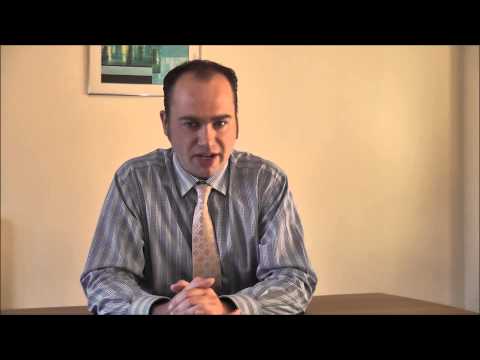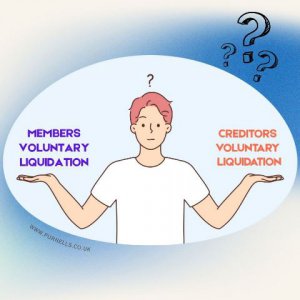Members Voluntary Liquidation (MVL) - Advice on ending the life of a solvent company and the tax benefits
Closing your Company and extracting the capital in the most tax efficient way by using a MVL
What is a Members Voluntary Liquidation (MVL)?
When the life of a solvent company needs to be brought to an end, a Members Voluntary Liquidation (MVL), is the most popular method that is used in the UK. A MVL is also sometimes known as a "solvent liquidation" as all creditors are paid in full and the surplus is then distributed to the shareholders. The main reason why a Members Voluntary Liquidation, or MVL, is used is to obtain the benefit of much lower tax rates on the capital you extract from your company.
Capital returned to shareholders in a liquidation is taxed at capital gains tax rates, and therefore at a lower rate than if the funds were taxed as dividends or taken as salary.
Also if Business Asset Disposal Relief, formerly known as Entrepreneurs Relief, is available then the tax charged could be as low at 14%.
Purnells have developed a guide to Members Voluntary Liquidations, which will assist your understanding of the process.
Why use a Members Voluntary Liquidation?
There are also various other reasons why the directors or shareholders of a solvent company might wish to use of a MVL:
- A dispute has arisen between the shareholders and directors of the Company, making it impractical for the Company to continue in its current form.
- A reconstruction of the company is needed to return excess capital to the shareholders via a "capital distribution " thus avoiding high rates of personal income tax.
- The company needs to be restructured to enable the sale of one part of the business.
- The end of trading following the retirement of the main person.
Due to the statutory notices to creditors, a Members Voluntary Liquidation can also be used to finalise creditors claims, so that if any unforeseen claims did arise in the future, those claims would not disturb the distributions to the shareholders.
Requirements & Procedure
In order for a Company to be placed into Members Voluntary Liquidation the directors of the Company must swear a Declaration of Solvency incorporating a Statement of Affairs to demonstrate that the company is solvent, i.e. it can pay all of its debts in full. The Declaration of Solvency needs to be sworn in front of a solicitor and also a copy needs to be filed at Companies House. Section 89 of The Insolvency Act 1986 stated that the statement of truth must state that the directors:
- Have made full enquiry into the Company's financial affairs and
- Have formed the opinion that the company will be able to pay all its debts, with statutory interest, within twelve months
Once that statement of truth has been sworn then it is the shareholders of the company who are the ones who control the appointment of the liquidator in the liquidation, not the creditors. All creditors will be paid in full, together with statutory interest, and therefore creditors have no financial interest in how the winding up of the Company is conducted or who the liquidator should be.
It is therefore the shareholders who appoint the liquidator of their choice in a Members Voluntary Liquidation or MVL. The liquidator then lays his annual and final accounts before members only.
You can also read the possible alternative approaches to see if a Members Voluntary Liquidation is the best step for your company to take.
Tax Benefits
A Members Voluntary Liquidation is, in many instances, used to obtain tax benefits. In a MVL the distributions made by the liquidator to the shareholders are called capital distributions as opposed to income.
Capital distributions are therefore subject to Capital Gains Tax not Income Tax. The tax payable is therefore much reduced, and the shareholders can also take advantage of their personal annual capital allowance.
After applying the various capital reliefs that may be available - such as Business Asset Disposal Relief, (formerly called Entrepreneur's Relief) this can reduce the tax payable to 14%. Most companies that are considered trading companies, as opposed to an investment company, are allowed to take advantage of Business Asset Disposal Relief.
Tax Clearance
The most time-consuming part of the liquidation process used to be obtaining tax clearance from HMRC. Tax clearance is basically HM Revenue and Customs confirming that they have received all of the outstanding returns, the tax has been paid and they have closed the file. Once confirmed the liquidation can be closed. Unfortunately, it has historically taken HMRC six to twelve months (and sometimes considerably longer) to provide tax clearance, which means that the liquidation process can last up to, and sometimes longer, than twelve months.
However, the situation changed on the 6 December 2023. HMRC no longer provides tax clearance and therefore by giving HMRC the usual creditor notice, plus an extra 28 days, it is possible in most cases to complete the liquidation within two to three months, which includes distributing the funds to the shareholders and issuing the liquidator's final report.
A MVL is therefore a very quick and efficient way to bring the life of a company to an end.
For more information and advice on Members Voluntary liquidations please refer to the index on the right hand side of this web page, call one of our Insolvency Practitioners on 01326 340 579, or email us at help@purnells.co.uk and one of our Licensed Insolvency Practitioners will contact you straight away.
Would you like us to give you a call?
Fill in the form and we'll give you a call as soon as we can to discuss your needs in a free initial consultation with a Licensed Insolvency Practitioner. Alternatively give us a call on 01326 340579 if there is an urgency to your needs.
The information provided will be used solely to contact you and any information you provide will be held in accordance with our firm's privacy policy, and not used for marketing purposes.







